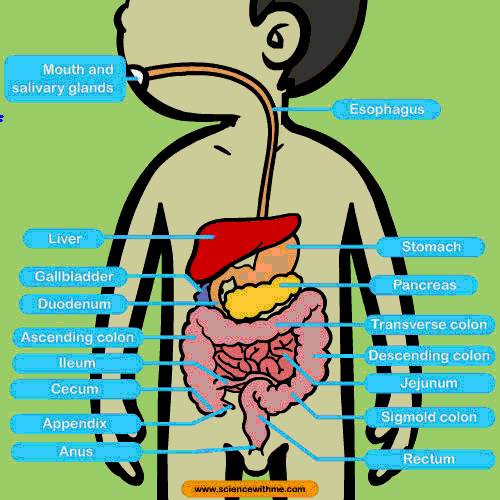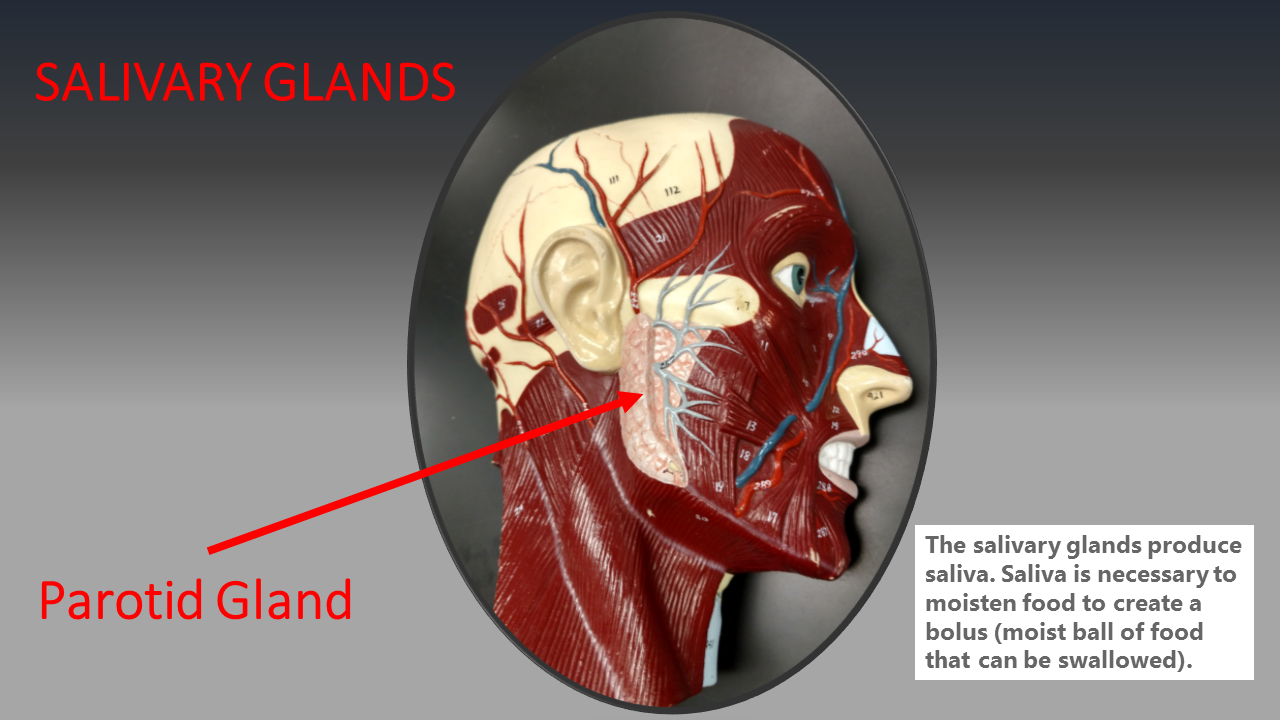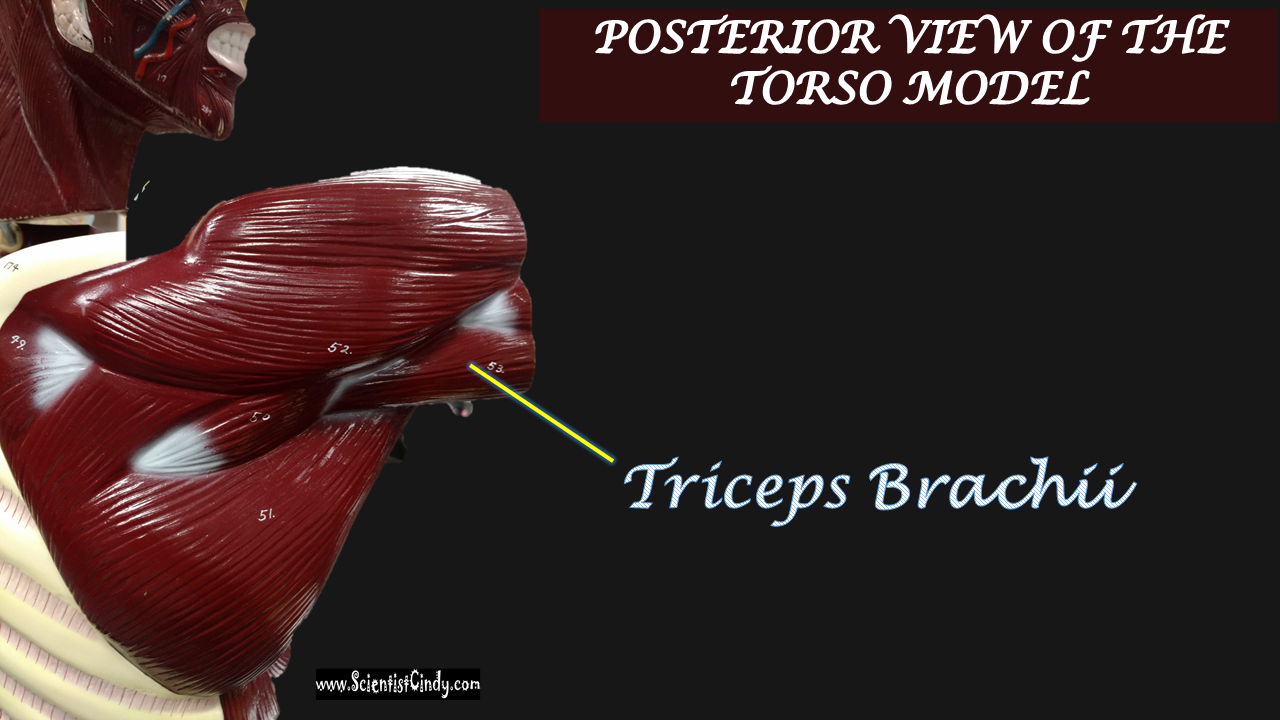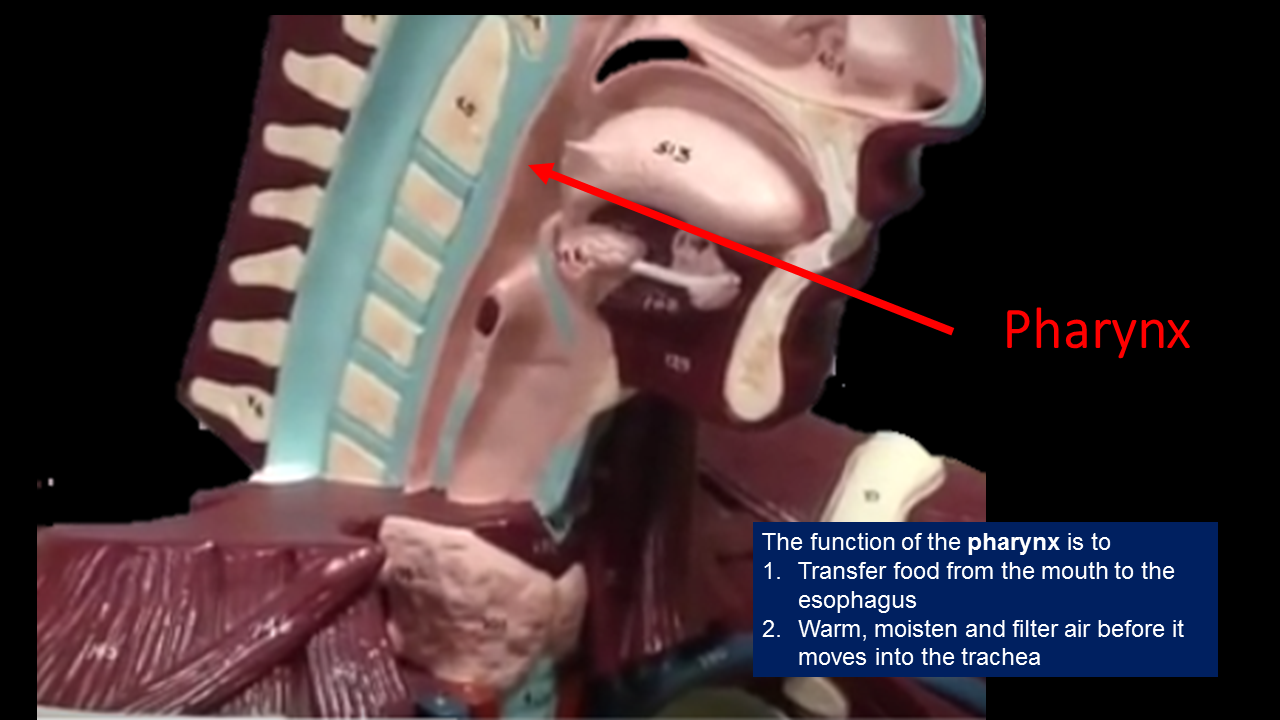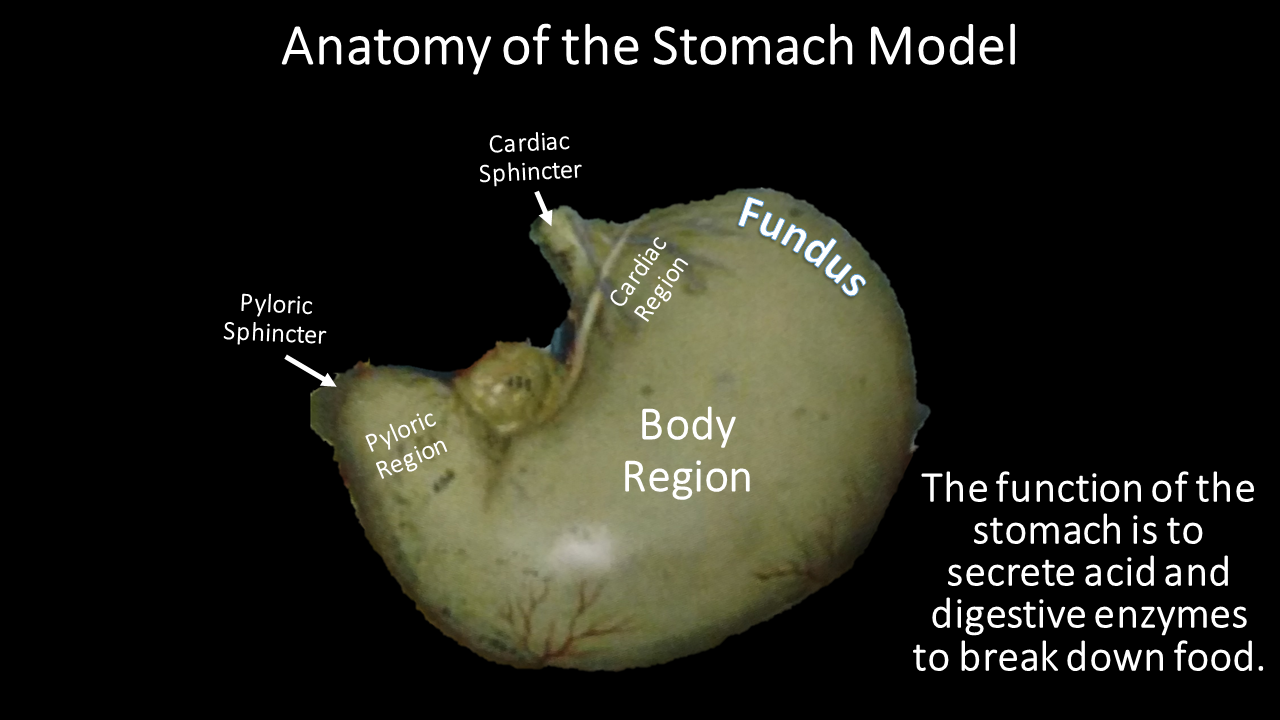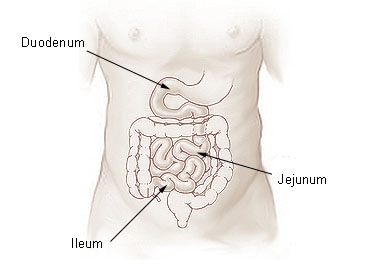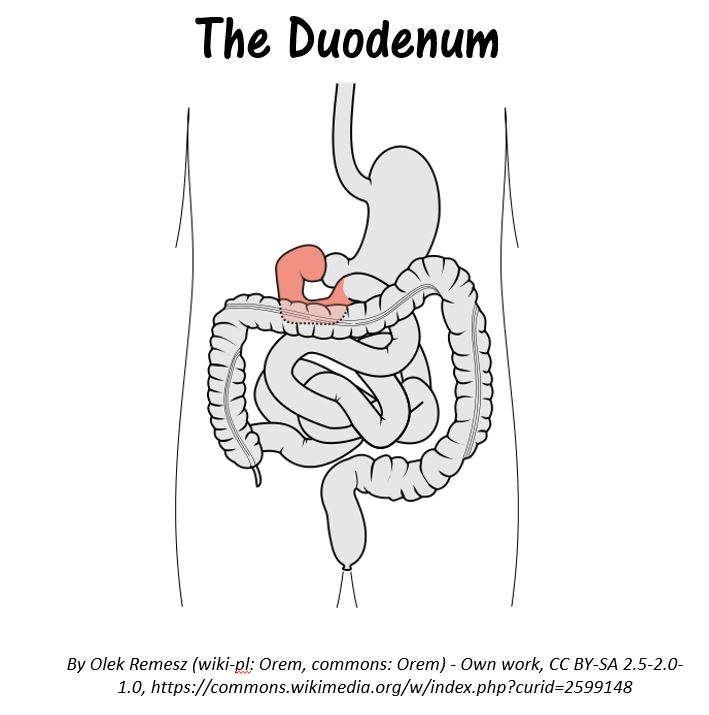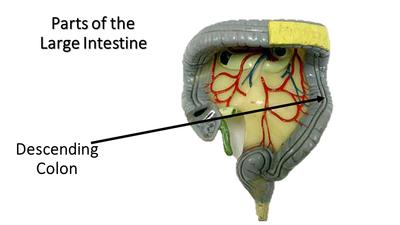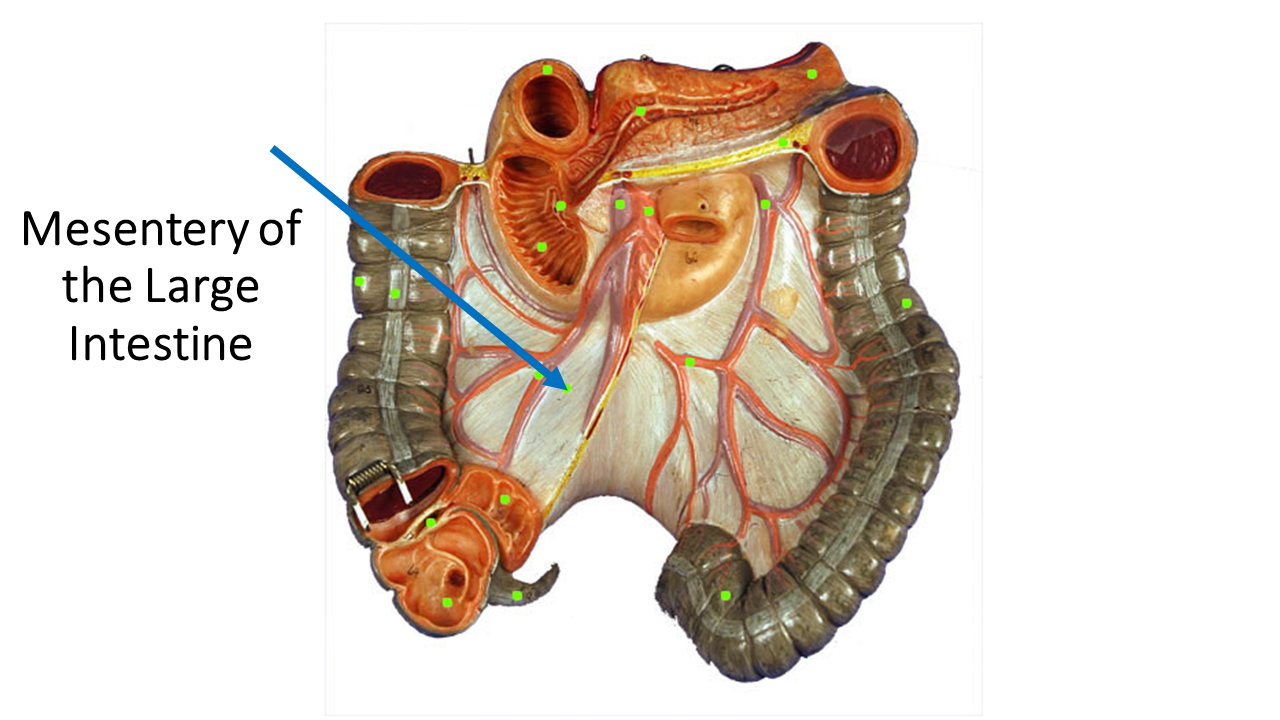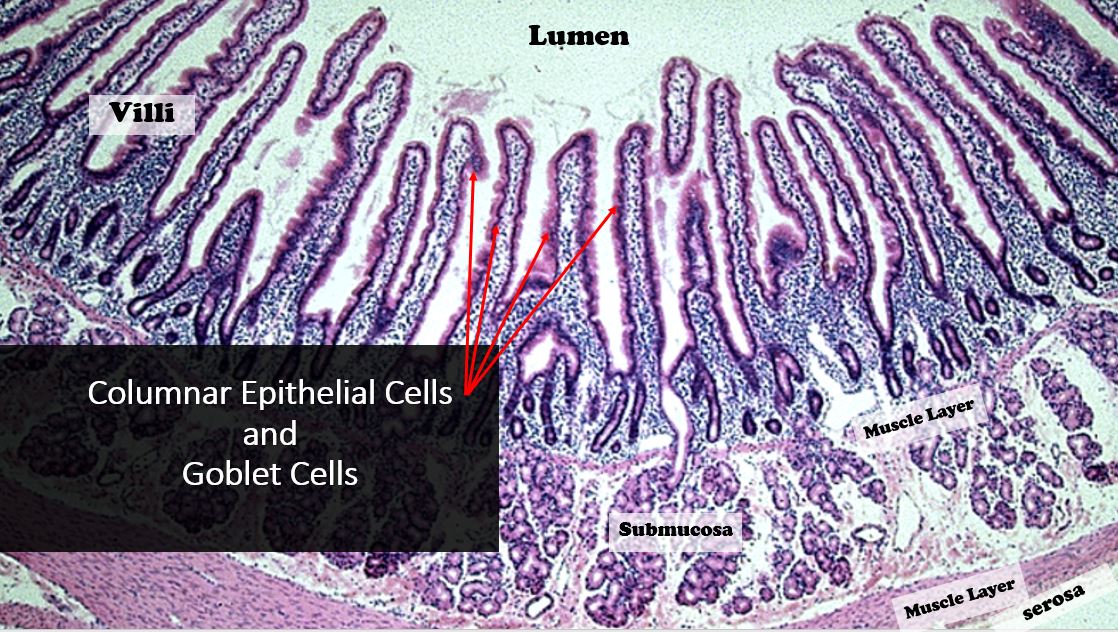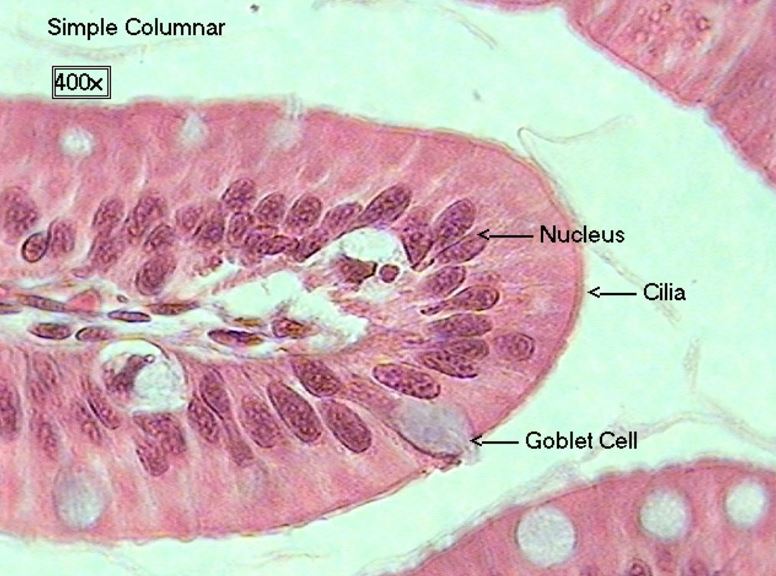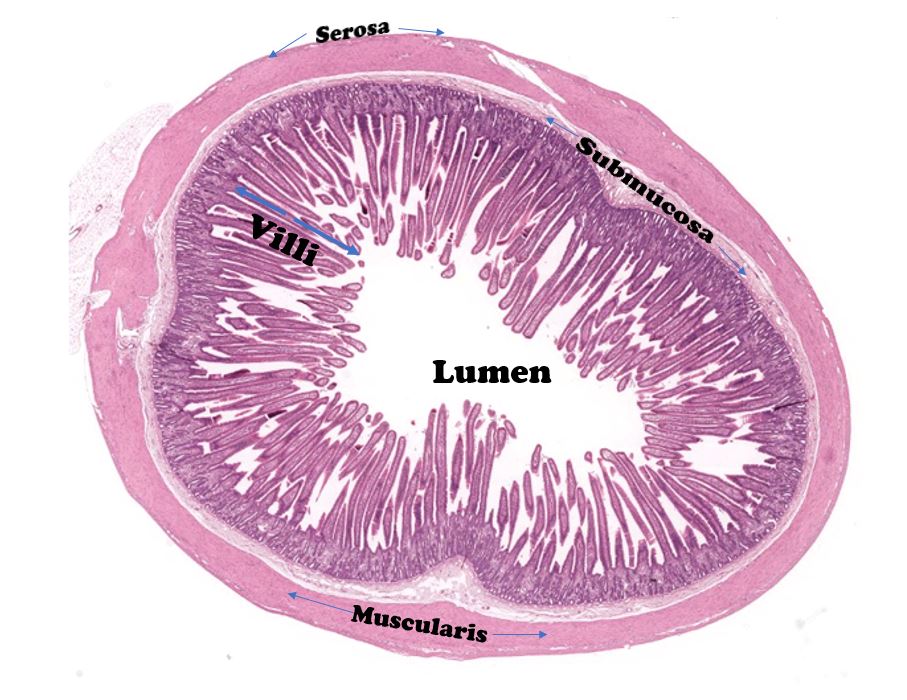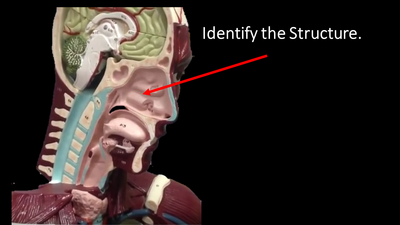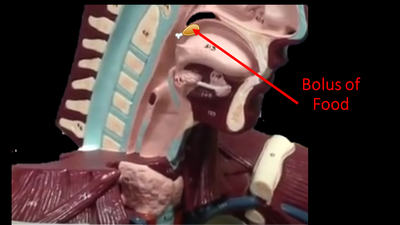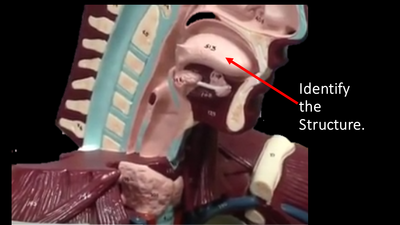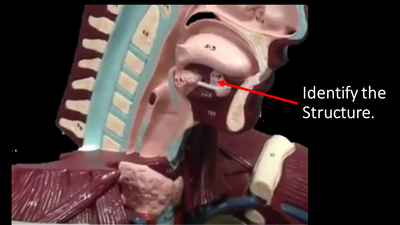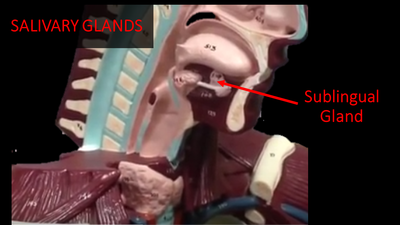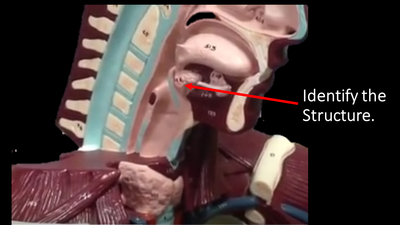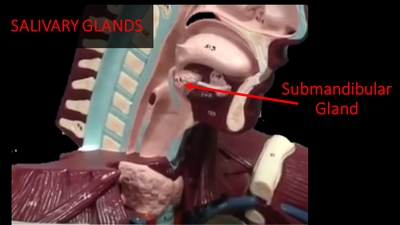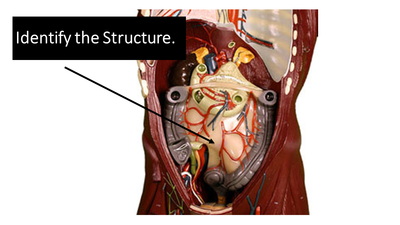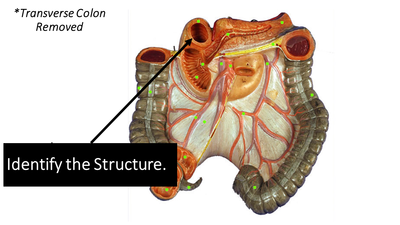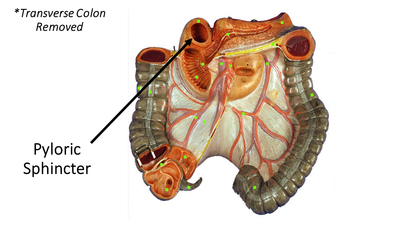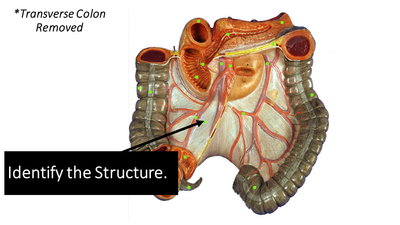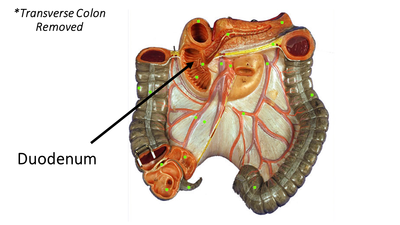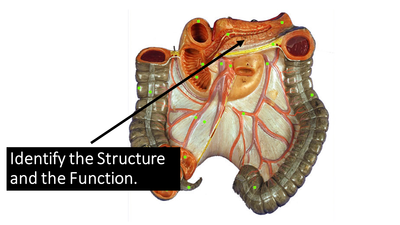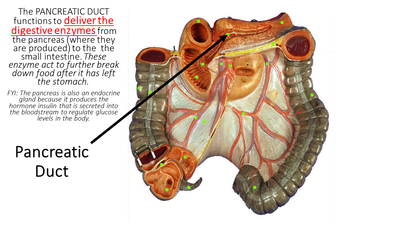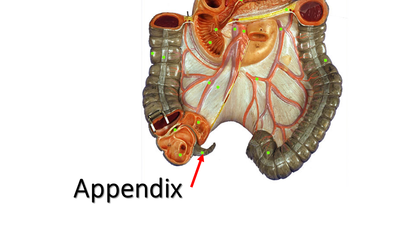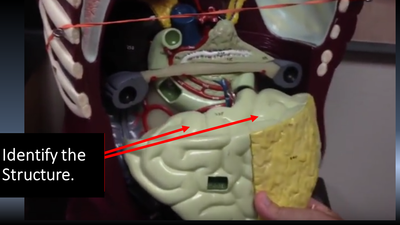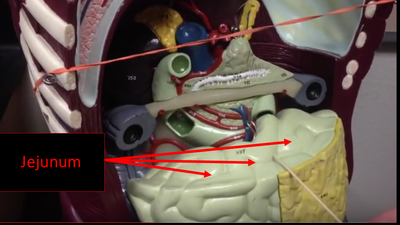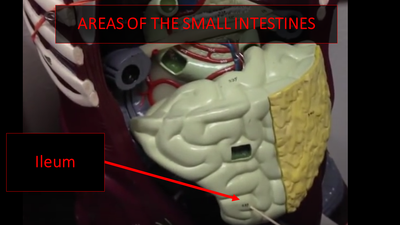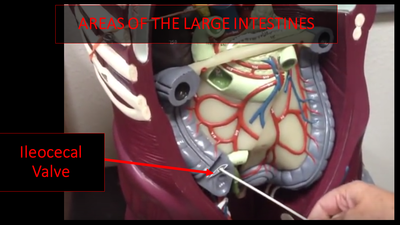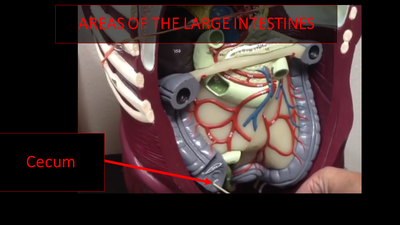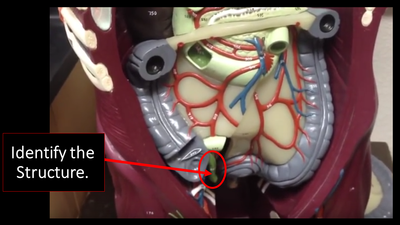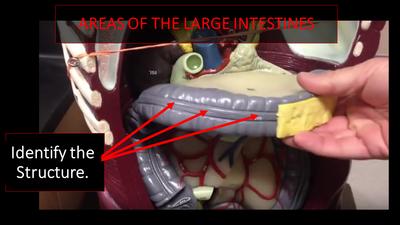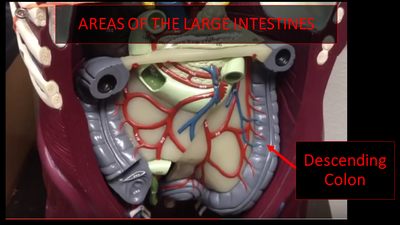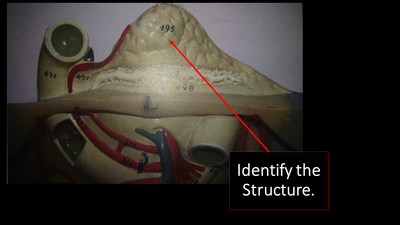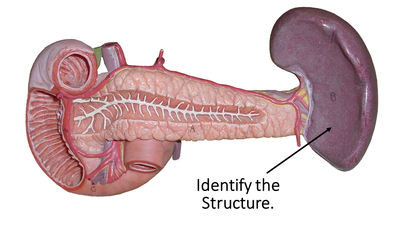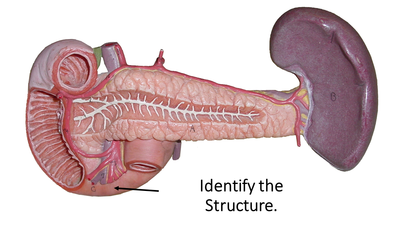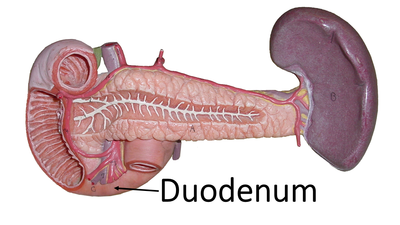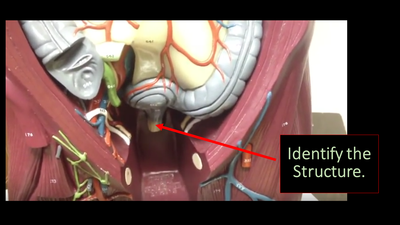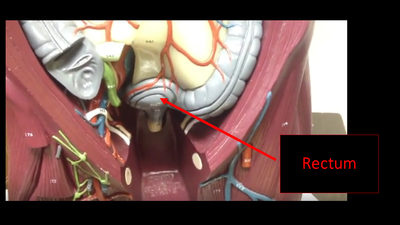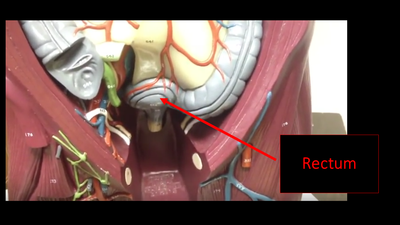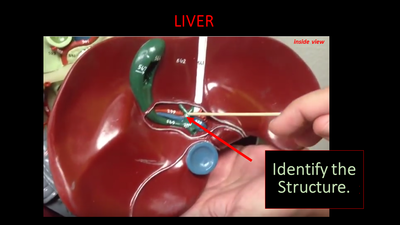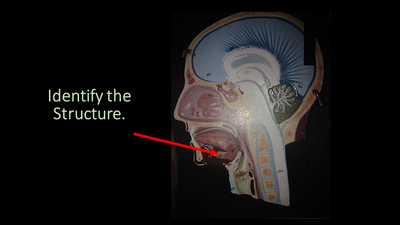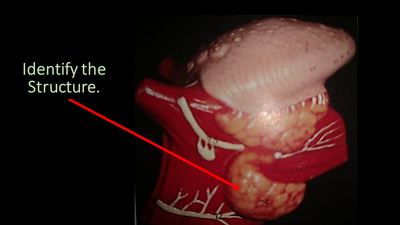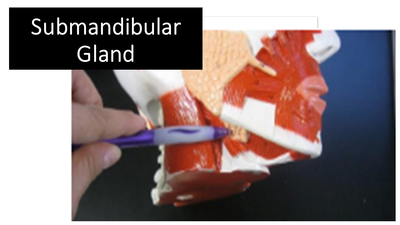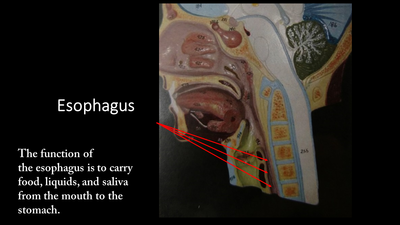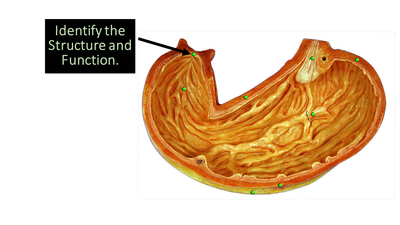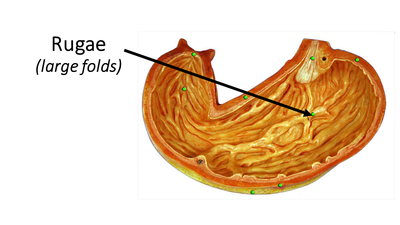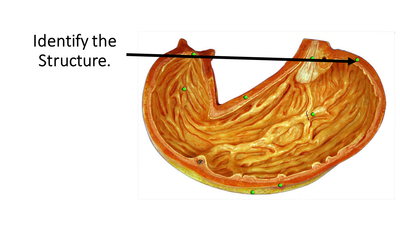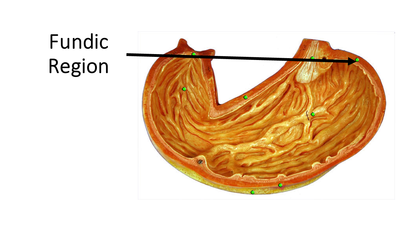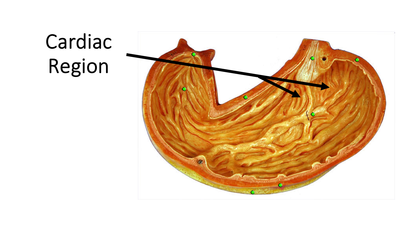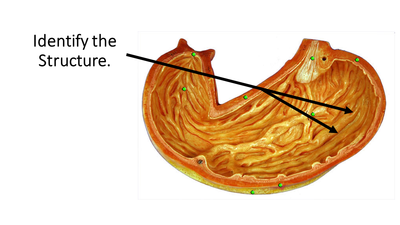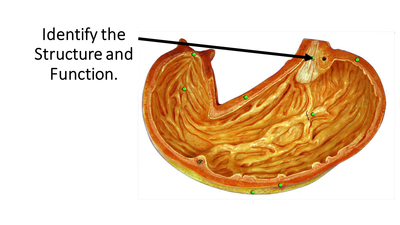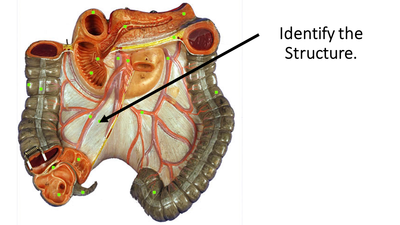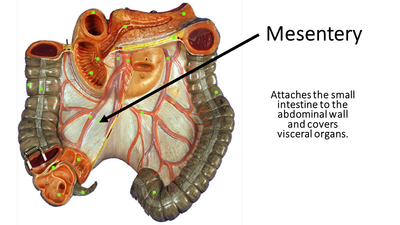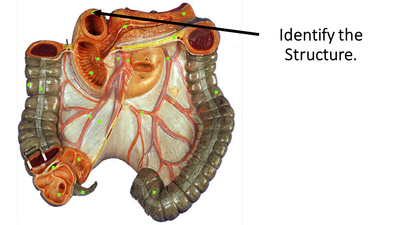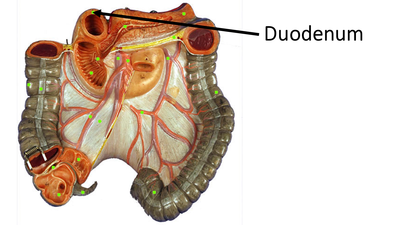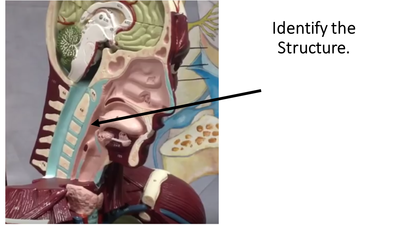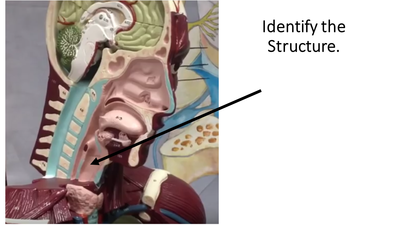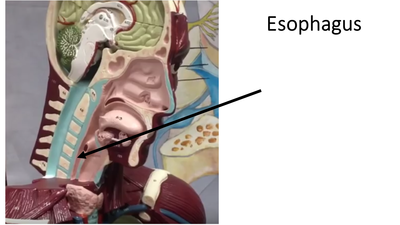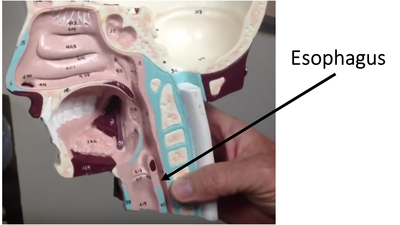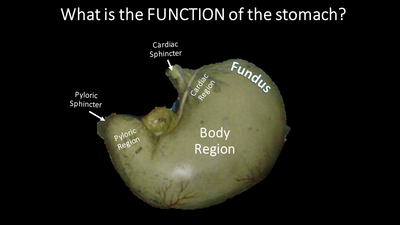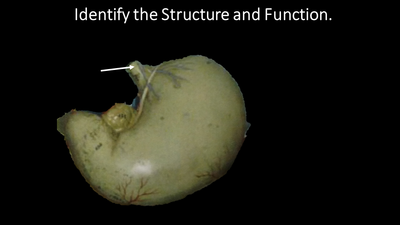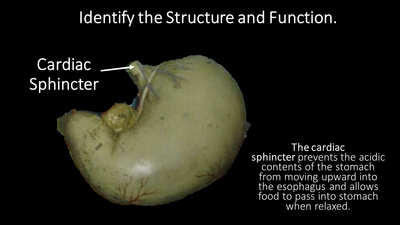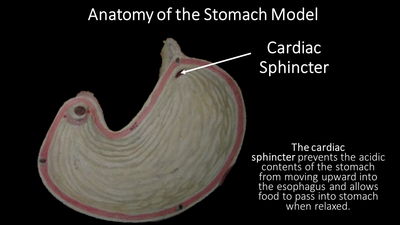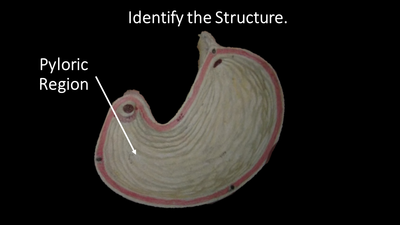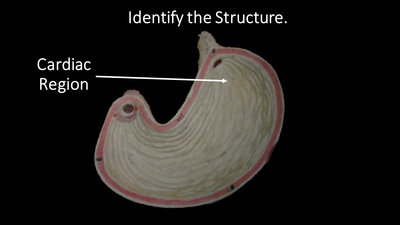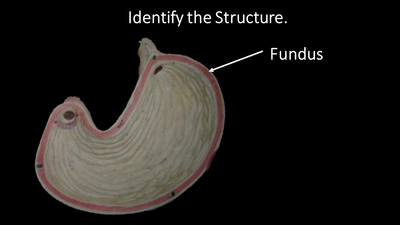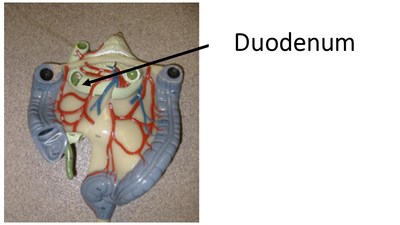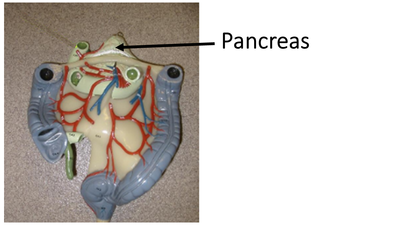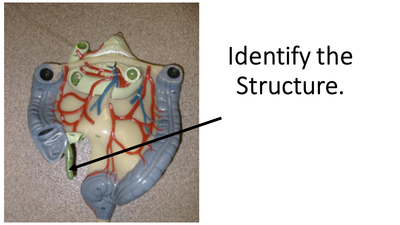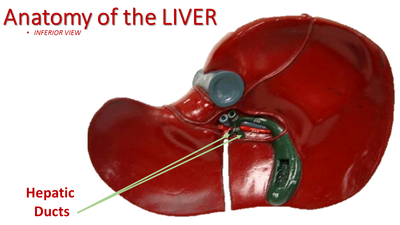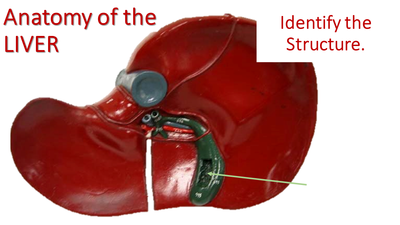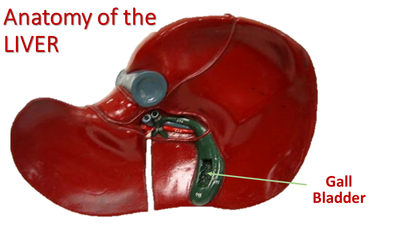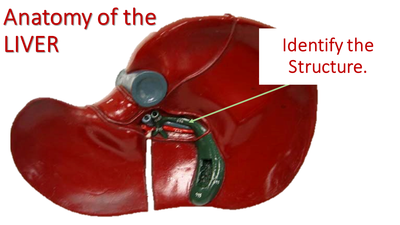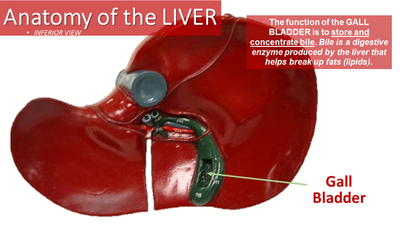Practical Practice Video by ScientistCindy |
Slide Show |
What is the Digestive System?
The digestive system works to convert the food we eat into smaller units our body can absorb and use. It achieves this by
1) Take in food
2) Break food up into nutrient molecules
3) Absorbing nutrient molecules into the circulatory system
4) Eliminating the indigestible waste

The organs of the digestive system perform the following six activities:
- Ingestion - taking of food into the mouth.
- Propulsion - movement of food through the alimentary canal
- Swallowing (voluntary)
- Peristalsis - moves food through the alimentary canal by waves of involuntary contraction and relaxation of smooth muscle
- Mechanical - the physical processes that break up larger pieces of food into smaller pieces.
- Chewing
- Churning processes of the stomach
- Rhythmic contraction and relaxation (peristalsis) of smooth muscle of the small intestine.
- Digestion - the chemical decomposition of carbohydrates, proteins, and lipids into their simpler building blocks (simple sugars, amino acids, and fatty acids or glycerol, respectively). Digestion is carried out by digestive enzymes and other substances secreted by the accessory organs. The processes of digestion take place in the lumen of the alimentary canal.
- Absorption - the transportation of digested food from the lumen of the alimentary canal into the blood and lymphatic capillaries located in the wall of the canal.
- Defecation - the elimination of indigestible substances (wastes) from the body as feces.
The digestive system is divided into two main groups: the alimentary canal and the accessory digestive organs.
The alimentary canal gets its names from a word meaning "nourishment". The alimentary canal is better known as the gastrointestinal (or G.I.) tract. The alimentary canal is a continuous tube lined with smooth muscle that extends from the mouth to the anus. The organs that make up the alimentary canal are as follows:
- Mouth
- Pharynx
- Esophagus
- Stomach
- Small Intestine (small bowel)
- Large Intestine (large bowel)
|
The digestive system includes the accessory digestive organs which are as follows:
|
|
Digestive System Structures of the Head and Neck
The Oral Cavity

The oral cavity (or mouth) contains the teeth, the cheek, the palate and the anterior portion of the tongue. The opening of the mouth is referred to as the oral orifice. The mouth functions to take in food and to contain structures needed for mastication. It also houses the tongue to sense, taste and it assists in the formation of words and sounds for speech.
Food enters the alimentary canal through the mouth. Food in the mouth is mechanically broken down by chewing and manipulation of the tongue. The food is moistened with saliva to form a bolus of food, that is able to be swallowed. The saliva also contains digestive enzymes which begin to chemically break down some food substances.
Food enters the alimentary canal through the mouth. Food in the mouth is mechanically broken down by chewing and manipulation of the tongue. The food is moistened with saliva to form a bolus of food, that is able to be swallowed. The saliva also contains digestive enzymes which begin to chemically break down some food substances.
The Salivary Glands
The salivary glands produce saliva. Saliva is necessary to moisten food to create a bolus (moist ball of food that can be swallowed).
The parotid gland is found outside of the cheek, the sublingual gland lies under the tongue and the submandibular gland lies under the mandible (jaw).
The parotid gland is found outside of the cheek, the sublingual gland lies under the tongue and the submandibular gland lies under the mandible (jaw).
Pharynx (Throat)

The pharynx is better known as the throat. The throat leads from the nose cavity and the mouth cavity to the esophagus and the trachea. Pharynx is subdivided into the following three sections;
1) the nasopharynx
2) the oropharynx
3) thr laryngopharynx.
The pharynx has 2 functions:
1) to warm, moisten and filter air before it reaches the trachea
2) to deliver food to esophagus.
The muscular walls of the pharynx function in the process of swallowing, which allows food to be delivered to the esophagus. It serves as a pathway for the movement of food from the mouth to the esophagus. When food is swallowed, it travels from the oral cavity to the oropharynx, then on to the laryngopharynx. The oropharynx and the laryngopharynx are common pathways for both food and air. The inferior portion of the pharynx diverges to form the esophagus (for food delivery) and the trachea (for air exchange). The epiglottis regulates what substances enter the airway of the trachea.
1) the nasopharynx
2) the oropharynx
3) thr laryngopharynx.
The pharynx has 2 functions:
1) to warm, moisten and filter air before it reaches the trachea
2) to deliver food to esophagus.
The muscular walls of the pharynx function in the process of swallowing, which allows food to be delivered to the esophagus. It serves as a pathway for the movement of food from the mouth to the esophagus. When food is swallowed, it travels from the oral cavity to the oropharynx, then on to the laryngopharynx. The oropharynx and the laryngopharynx are common pathways for both food and air. The inferior portion of the pharynx diverges to form the esophagus (for food delivery) and the trachea (for air exchange). The epiglottis regulates what substances enter the airway of the trachea.
The Esophagus
The esophagus is lined with smooth muscle that propels swallowed food to the stomach. The esophagus begins as a continuation of the pharynx and travels downward through thoracic cavity, then through the diaphragm, to enter the abdominal cavity where it meets with the stomach. The function of the esophagus is deliver food from the pharynx to the stomach.
The Stomach
The stomach lies inferior to the liver and superior to the transverse colon.
|
The stomach contains some main anatomical features. The stomach begins at the cardial sphincter that connects the esophagus to the stomach. Food enters the first portion of the stomach, called the cardial region. The fundus of the stomach is the superior "dome-shaped" region of the stomach that lies just inferior of the diaphragm. The large midportion of the stomach is called the body. As you travel downward through the stomache, the body becomes the pyloric region (which includes the pyloric antrum and pyloric canal) which looks like a funnel. The terminal end of the stomach contains the pyloric sphincter. The word pylorus means “gatekeeper”. Living up to its name, the pyloric sphincter controls the entry of partially digested food into the small intestine.
|
|
From the esophagus, the bolus of food will pass through the cardiac sphincter of the stomach.
Partially digested food will pass from the stomach to the duodenum through the pyloric sphincter of the stomach.
|
The function of the pyloric sphincter is to act as a valve that prevents larger chunks of food to pass onto the duodenum from the stomach. The pyloric valve only allows food that has been broken down into relatively small parts to pass onto the duodenum. The duodenum is considered the first part of the small intestine.
|
|



